
EBK CHEMISTRY: AN ATOMS FIRST APPROACH
2nd Edition
ISBN: 9780100552234
Author: ZUMDAHL
Publisher: YUZU
expand_more
expand_more
format_list_bulleted
Concept explainers
Textbook Question
Chapter 15, Problem 33E
Calculate the molar solubility of Al(OH)3, Ksp = 2 × 10−32.
Expert Solution & Answer
Trending nowThis is a popular solution!

Students have asked these similar questions
Draw the titration curve of (i) weak acid vs. strong base; (ii) weak acid vs. weakbase; (iii) diprotic acid with strong base (iii) triprotic acid with strong base.
Complete the reaction in the drawing area below by adding the major products to the right-hand side.
If there won't be any products, because nothing will happen under these reaction conditions, check the box under the drawing area instead.
Note: if the products contain one or more pairs of enantiomers, don't worry about drawing each enantiomer with dash and wedge bonds. Just draw one molecule
to represent each pair of enantiomers, using line bonds at the chiral center.
More...
No reaction.
my
ㄖˋ
+
1. Na O Me
Click and drag to start
drawing a structure.
2. H
+
Predict the intermediate 1 and final product 2 of this organic reaction:
NaOMe
H+
+
1
2
H
H
work up
You can draw 1 and 2 in any arrangement you like.
Note: if either 1 or 2 consists of a pair of enantiomers, just draw one structure using line bonds instead of 3D (dash and wedge) bonds at the chiral center.
Click and drag to start drawing a structure.
X
$
dm
Chapter 15 Solutions
EBK CHEMISTRY: AN ATOMS FIRST APPROACH
Ch. 15 - To what reaction does the solubility product...Ch. 15 - Prob. 2RQCh. 15 - Prob. 3RQCh. 15 - Prob. 4RQCh. 15 - Prob. 5RQCh. 15 - Prob. 6RQCh. 15 - Prob. 7RQCh. 15 - Prob. 8RQCh. 15 - Prob. 9RQCh. 15 - Prob. 10RQ
Ch. 15 - Prob. 1ALQCh. 15 - Prob. 2ALQCh. 15 - Prob. 3ALQCh. 15 - A friend tells you: The constant Ksp of a salt is...Ch. 15 - Prob. 5ALQCh. 15 - Prob. 6ALQCh. 15 - Prob. 7ALQCh. 15 - For which of the following is the Ksp value of the...Ch. 15 - Ag2S(s) has a larger molar solubility than CuS...Ch. 15 - Prob. 10QCh. 15 - Prob. 11QCh. 15 - When Na3PO4(aq) is added to a solution containing...Ch. 15 - The common ion effect for ionic solids (salts) is...Ch. 15 - Prob. 14QCh. 15 - Prob. 15QCh. 15 - The stepwise formation constants for a complex ion...Ch. 15 - Prob. 17QCh. 15 - Prob. 18QCh. 15 - Write balanced equations for the dissolution...Ch. 15 - Write balanced equations for the dissolution...Ch. 15 - Prob. 21ECh. 15 - Use the following data to calculate the Ksp value...Ch. 15 - Approximately 0.14 g nickel(II) hydroxide,...Ch. 15 - The solubility of the ionic compound M2X3, having...Ch. 15 - Prob. 25ECh. 15 - Prob. 26ECh. 15 - Calculate the solubility of each of the following...Ch. 15 - Prob. 28ECh. 15 - Cream of tartar, a common ingredient in cooking,...Ch. 15 - Prob. 30ECh. 15 - Prob. 31ECh. 15 - Calculate the molar solubility of Cd(OH)2, Ksp =...Ch. 15 - Calculate the molar solubility of Al(OH)3, Ksp = 2...Ch. 15 - Calculate the molar solubility of Co(OH)3, Ksp =...Ch. 15 - Prob. 35ECh. 15 - For each of the following pairs of solids,...Ch. 15 - Calculate the solubility (in moles per liter) of...Ch. 15 - Calculate the solubility of Co(OH)2(s) (Ksp = 2.5 ...Ch. 15 - The Ksp for silver sulfate (Ag2SO4) is 1.2 105....Ch. 15 - Prob. 40ECh. 15 - Prob. 41ECh. 15 - Prob. 42ECh. 15 - Prob. 43ECh. 15 - The solubility of Pb(IO3)(s) in a 0.10-M KIO3...Ch. 15 - Prob. 45ECh. 15 - For which salt in each of the following groups...Ch. 15 - What mass of ZnS (Ksp = 2.5 1022) will dissolve...Ch. 15 - The concentration of Mg2+ in seawater is 0.052 M....Ch. 15 - Will a precipitate form when 100.0 mL of 4.0 104...Ch. 15 - A solution contains 1.0 105 M Ag+ and 2.0 106 M...Ch. 15 - A solution is prepared by mixing 100.0 mL of 1.0 ...Ch. 15 - Prob. 52ECh. 15 - Calculate the final concentrations of K+(aq),...Ch. 15 - Prob. 54ECh. 15 - A 50.0-mL sample of 0.00200 M AgNO3 is added to...Ch. 15 - Prob. 56ECh. 15 - A solution contains 1.0 105 M Na3PO4. What is the...Ch. 15 - The Ksp of Al(OH)3 is 2 1032. At what pH will a...Ch. 15 - A solution is 1 104 M in NaF, Na2S, and Na3PO4....Ch. 15 - A solution contains 0.25 M Ni(NO3)2 and 0.25 M...Ch. 15 - Write equations for the stepwise formation of each...Ch. 15 - Write equations for the stepwise formation of each...Ch. 15 - In the presence of CN, Fe3+ forms the complex ion...Ch. 15 - In the presence of NH3, Cu2+ forms the complex ion...Ch. 15 - Prob. 65ECh. 15 - Prob. 66ECh. 15 - The overall formation constant for HgI42 is 1.0 ...Ch. 15 - Prob. 68ECh. 15 - A solution is formed by mixing 50.0 mL of 10.0 M...Ch. 15 - A solution is prepared by mixing 100.0 mL of 1.0 ...Ch. 15 - a. Calculate the molar solubility of AgI in pure...Ch. 15 - Solutions of sodium thiosulfate are used to...Ch. 15 - Kf for the complex ion Ag(NH3)2+ is 1.7 107. Ksp...Ch. 15 - Prob. 74ECh. 15 - Prob. 75ECh. 15 - The solubility of copper(II) hydroxide in water...Ch. 15 - A solution contains 0.018 mole each of I, Br, and...Ch. 15 - Prob. 78AECh. 15 - Tooth enamel is composed of the mineral...Ch. 15 - Prob. 80AECh. 15 - What mass of Ca(NO3)2 must be added to 1.0 L of a...Ch. 15 - Calculate the mass of manganese hydroxide present...Ch. 15 - Prob. 83AECh. 15 - The active ingredient of Pepto-Bismol is the...Ch. 15 - Prob. 85AECh. 15 - The equilibrium constant for the following...Ch. 15 - Calculate the concentration of Pb2+ in each of the...Ch. 15 - Will a precipitate of Cd(OH)2 form if 1.0 mL of...Ch. 15 - Prob. 89AECh. 15 - Describe how you could separate the ions in each...Ch. 15 - Prob. 91AECh. 15 - Prob. 92AECh. 15 - Prob. 93CWPCh. 15 - Prob. 94CWPCh. 15 - Prob. 95CWPCh. 15 - The solubility of Pb(IO3)2(s) in a 7.2 102-M KIO3...Ch. 15 - A 50.0-mL sample of 0.0413 M AgNO3(aq) is added to...Ch. 15 - Prob. 98CWPCh. 15 - Prob. 99CPCh. 15 - Consider a solution made by mixing 500.0 mL of 4.0...Ch. 15 - a. Calculate the molar solubility of AgBr in pure...Ch. 15 - Prob. 102CPCh. 15 - Prob. 103CPCh. 15 - Calcium oxalate (CaC2O4) is relatively insoluble...Ch. 15 - What is the maximum possible concentration of Ni2+...Ch. 15 - A mixture contains 1.0 103 M Cu2+ and 1.0 103 M...Ch. 15 - Sodium tripolyphosphate (Na5P3O10) is used in many...Ch. 15 - You add an excess of solid MX in 250g water. You...Ch. 15 - a. Calculate the molar solubility of SrF2 in...Ch. 15 - Prob. 110IPCh. 15 - Prob. 111IPCh. 15 - Prob. 112IPCh. 15 - Aluminum ions react with the hydroxide ion to form...
Additional Science Textbook Solutions
Find more solutions based on key concepts
Why is it unlikely that two neighboring water molecules would be arranged like this?
Campbell Biology (11th Edition)
Gregor Mendel never saw a gene, yet he concluded that some inherited factors were responsible for the patterns ...
Campbell Essential Biology (7th Edition)
To test your knowledge, discuss the following topics with a study partner or in writing ideally from memory. Th...
HUMAN ANATOMY
Choose the best answer to each of the following. Explain your reasoning. If Earth were twice as far as it actua...
Cosmic Perspective Fundamentals
Why are mutants used as test organisms in the Ames test?
Laboratory Experiments in Microbiology (12th Edition) (What's New in Microbiology)
2. Define equilibrium population. Outline the conditions that must be met for a population to stay in genetic e...
Biology: Life on Earth (11th Edition)
Knowledge Booster
Learn more about
Need a deep-dive on the concept behind this application? Look no further. Learn more about this topic, chemistry and related others by exploring similar questions and additional content below.Similar questions
- Predict the major products of this organic reaction: 1. NaH (20°C) 2. CH3Br ? Some notes: • Draw only the major product, or products. You can draw them in any arrangement you like. • Be sure to use wedge and dash bonds where necessary, for example to distinguish between major products that are enantiomers. • If there are no products, just check the box under the drawing area. No reaction. Click and drag to start drawing a structure. G Crarrow_forwardPredict the major products of this organic reaction: 1. LDA (-78°C) ? 2. Br Some notes: • Draw only the major product, or products. You can draw them in any arrangement you like. . • Be sure to use wedge and dash bonds where necessary, for example to distinguish between major products that are enantiomers. • If there are no products, just check the box under the drawing area. No reaction. Click and drag to start drawing a structure. Xarrow_forwardPlease draw the structuresarrow_forward
- Draw the missing intermediates 1 and 2, plus the final product 3, of this synthesis: 0 1. Eto 1. Eto- 1 2 2. MeBr 2. EtBr H3O+ A 3 You can draw the three structures in any arrangement you like. Explanation Check Click and drag to start drawing a structure.arrow_forwardDraw the missing intermediate 1 and final product 2 of this synthesis: 1. MeO- H3O+ 1 2 2. PrBr Δ You can draw the two structures in any arrangement you like. Click and drag to start drawing a structure.arrow_forwardWhat is the differences between: Glyceride and phosphoglyceride Wax and Fat Soap and Fatty acid HDL and LDL cholesterol Phospho lipids and sphingosine What are the types of lipids? What are the main lipid components of membrane structures? How could lipids play important rules as signaling molecules and building units? The structure variety of lipids makes them to play significant rules in our body, conclude breifly on this statement.arrow_forward
- What is the differences between DNA and RNA for the following: - structure - function - type What is the meaning of: - replication - transcription - translation show the base pair connection(hydrogen bond) in DNA and RNAarrow_forwardWhat is the IP for a amino acid- give an example what are the types of amino acids What are the structures of proteins The N-Terminal analysis by the Edman method shows saralasin contains sarcosine at the N-terminus. Partial hydrolysis of saralasin with dilute hydrochloric acid yields the following fragments: Try-Val-His Sar-Arg-Val His-Pro-Ala Val- Tyr- Val Arg-Val-Tyr What is the structure of saralasin?arrow_forwardWhat is the IP for a amino acid- give an example what are the types of amino acids What are the structures of proteins The N-Terminal analysis by the Edman method shows saralasin contains sarcosine at the N-terminus. Partial hydrolysis of saralasin with dilute hydrochloric acid yields the following fragments: Try-Val-His Sar-Arg-Val His-Pro-Ala Val- Tyr- Val Arg-Val-Tyr What is the structure of saralasin?arrow_forward
- > aw the missing intermediates 1 and 2, plus the final product 3, of this synthesis: 1. Eto 1. EtO¯ H3O+ 1 2 2. PrBr 2. PrBr Δ You can draw the three structures in any arrangement you like. 3 Click and drag to start drawing a structure. Explanation Check 2025 McGraw Hill LLC. All Rights Reserved. Terms of Use Privacarrow_forwardThere are various factors that affect an equilibrium. Give 3 of these factors and explain using examples andequations how an equilibrium is affected by these factors. Please remember that this is a communication question so that you are communicating your understanding of the factors that affect and equilibrium.arrow_forwardEEZE LETCHUP ID Draw the most likely conjugate base resulting from this acid-base reaction. Include all lone pairs. Ignore inorganic byproducts. Drawing く NaOCH2CH3 :0: :0: 狗arrow_forward
arrow_back_ios
SEE MORE QUESTIONS
arrow_forward_ios
Recommended textbooks for you
 Chemistry: Principles and ReactionsChemistryISBN:9781305079373Author:William L. Masterton, Cecile N. HurleyPublisher:Cengage Learning
Chemistry: Principles and ReactionsChemistryISBN:9781305079373Author:William L. Masterton, Cecile N. HurleyPublisher:Cengage Learning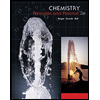 Chemistry: Principles and PracticeChemistryISBN:9780534420123Author:Daniel L. Reger, Scott R. Goode, David W. Ball, Edward MercerPublisher:Cengage Learning
Chemistry: Principles and PracticeChemistryISBN:9780534420123Author:Daniel L. Reger, Scott R. Goode, David W. Ball, Edward MercerPublisher:Cengage Learning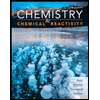 Chemistry & Chemical ReactivityChemistryISBN:9781337399074Author:John C. Kotz, Paul M. Treichel, John Townsend, David TreichelPublisher:Cengage Learning
Chemistry & Chemical ReactivityChemistryISBN:9781337399074Author:John C. Kotz, Paul M. Treichel, John Townsend, David TreichelPublisher:Cengage Learning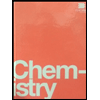 Chemistry by OpenStax (2015-05-04)ChemistryISBN:9781938168390Author:Klaus Theopold, Richard H Langley, Paul Flowers, William R. Robinson, Mark BlaserPublisher:OpenStax
Chemistry by OpenStax (2015-05-04)ChemistryISBN:9781938168390Author:Klaus Theopold, Richard H Langley, Paul Flowers, William R. Robinson, Mark BlaserPublisher:OpenStax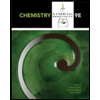 Chemistry & Chemical ReactivityChemistryISBN:9781133949640Author:John C. Kotz, Paul M. Treichel, John Townsend, David TreichelPublisher:Cengage Learning
Chemistry & Chemical ReactivityChemistryISBN:9781133949640Author:John C. Kotz, Paul M. Treichel, John Townsend, David TreichelPublisher:Cengage Learning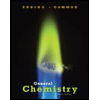 General Chemistry - Standalone book (MindTap Cour...ChemistryISBN:9781305580343Author:Steven D. Gammon, Ebbing, Darrell Ebbing, Steven D., Darrell; Gammon, Darrell Ebbing; Steven D. Gammon, Darrell D.; Gammon, Ebbing; Steven D. Gammon; DarrellPublisher:Cengage Learning
General Chemistry - Standalone book (MindTap Cour...ChemistryISBN:9781305580343Author:Steven D. Gammon, Ebbing, Darrell Ebbing, Steven D., Darrell; Gammon, Darrell Ebbing; Steven D. Gammon, Darrell D.; Gammon, Ebbing; Steven D. Gammon; DarrellPublisher:Cengage Learning

Chemistry: Principles and Reactions
Chemistry
ISBN:9781305079373
Author:William L. Masterton, Cecile N. Hurley
Publisher:Cengage Learning

Chemistry: Principles and Practice
Chemistry
ISBN:9780534420123
Author:Daniel L. Reger, Scott R. Goode, David W. Ball, Edward Mercer
Publisher:Cengage Learning

Chemistry & Chemical Reactivity
Chemistry
ISBN:9781337399074
Author:John C. Kotz, Paul M. Treichel, John Townsend, David Treichel
Publisher:Cengage Learning

Chemistry by OpenStax (2015-05-04)
Chemistry
ISBN:9781938168390
Author:Klaus Theopold, Richard H Langley, Paul Flowers, William R. Robinson, Mark Blaser
Publisher:OpenStax

Chemistry & Chemical Reactivity
Chemistry
ISBN:9781133949640
Author:John C. Kotz, Paul M. Treichel, John Townsend, David Treichel
Publisher:Cengage Learning

General Chemistry - Standalone book (MindTap Cour...
Chemistry
ISBN:9781305580343
Author:Steven D. Gammon, Ebbing, Darrell Ebbing, Steven D., Darrell; Gammon, Darrell Ebbing; Steven D. Gammon, Darrell D.; Gammon, Ebbing; Steven D. Gammon; Darrell
Publisher:Cengage Learning
General Chemistry | Acids & Bases; Author: Ninja Nerd;https://www.youtube.com/watch?v=AOr_5tbgfQ0;License: Standard YouTube License, CC-BY